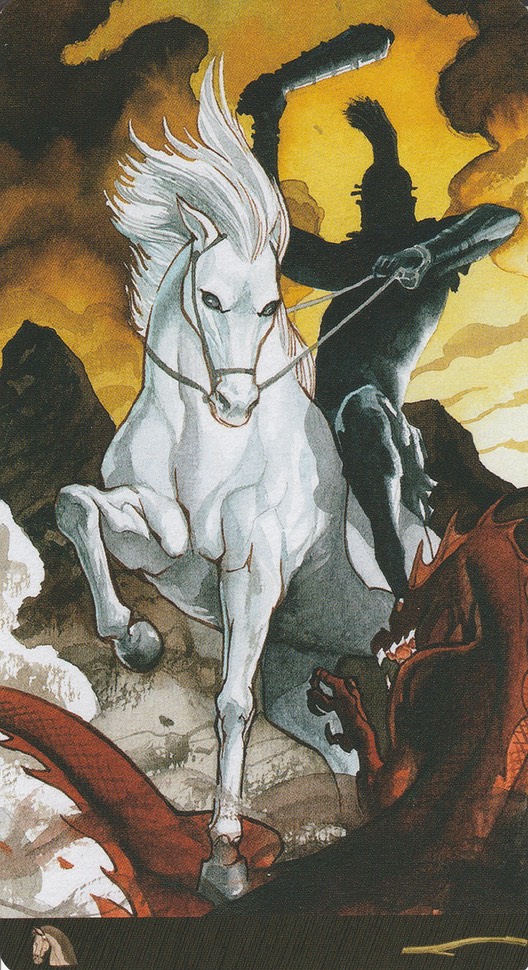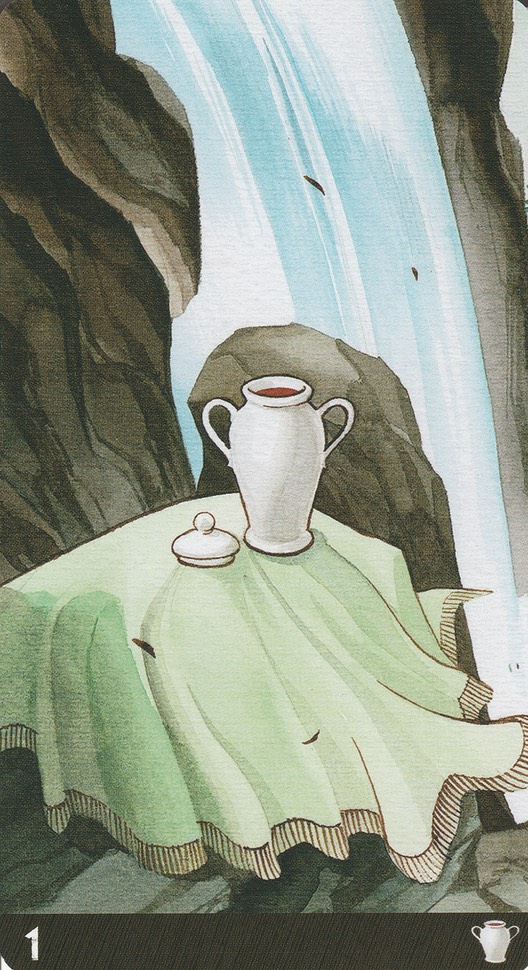Review by Lalia Wilson
The Afro-Brazilian Tarot is a deck organized around the new world adaptation of African religion. Specifically with the religion of the Yoruba people which evolved in the western hemisphere to Candomble in Brazil and Santera in Cuba. These religious influences pervade the deck, especially the trumps, which are inscrutable to most tarot readers without extensive consultation with the indispensable (in this case) Little White Book. Most readers, upon first acquaintance, will only be able to decipher the trumps by their Roman Numerals.
This deck is the standard 78 cards. The cards are 2 ½ inches by 4 ¾ inches and feel good in the hands. The card backs are reversible friendly.
The Trumps and the Minor Arcana are not named on the cards, but instead numbers and symbols are used to identify each. The Court cards are the Knave (Page), Knight, Queen, and King. The LWB is written in multiple languages: English, Italian, Spanish, French, German, and Portuguese. Justice is card VIII and Strength is card XI. Each trump is connected to a specific Candomble story. Since most readers will be unfamiliar with these stories without study, this deck requires adjustment to read.
The images on the cards are hit or miss to this reviewer. I am going to highlight three cards here and point the reader to six more images on the Tarot Scopes page. The most powerful and visually arresting image to me was the Knight of Wands. He is a fierce warrior and a dominant foe.
The Ace of Chalices (Cups) is strongly connected to the yin water element of this suit. The pastel colors, the flowing waterfall, the receptive vessel, and the moving tablecloth all strongly convey the meaning of the Ace of Cups.
The Nine of Chalices (Cups) is another strong card with a female raising the chalice to the incoming stormy sea as she stands on a windswept beach.
While there are voices calling for more cultural inclusivity in the tarot, most Americans, including African-Americans, will find this deck less easy to work with. There are human figures in many of the cards, and most have dark skin, but this alone will not be as user friendly as one might expect. The religious stories in this deck are alien to most U.S. readers.



